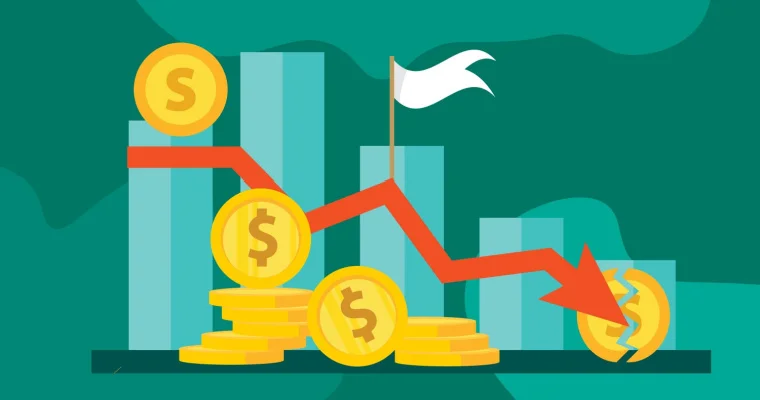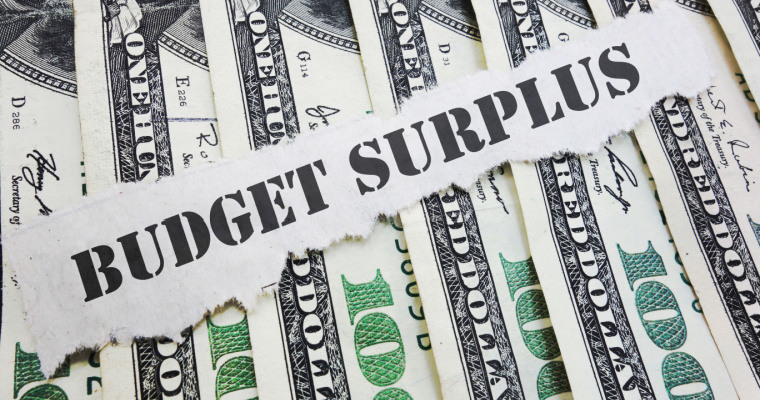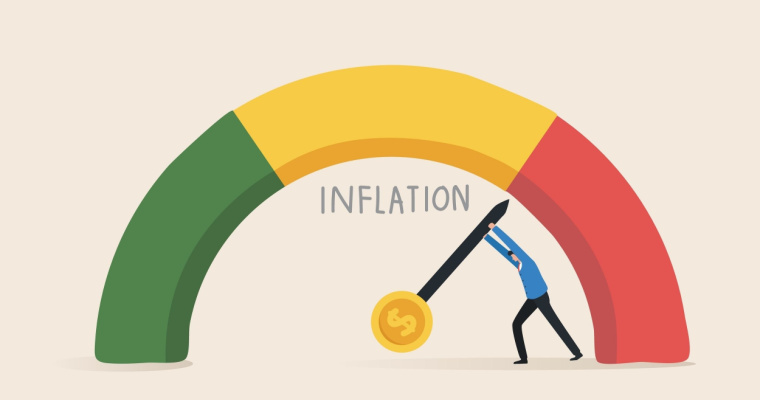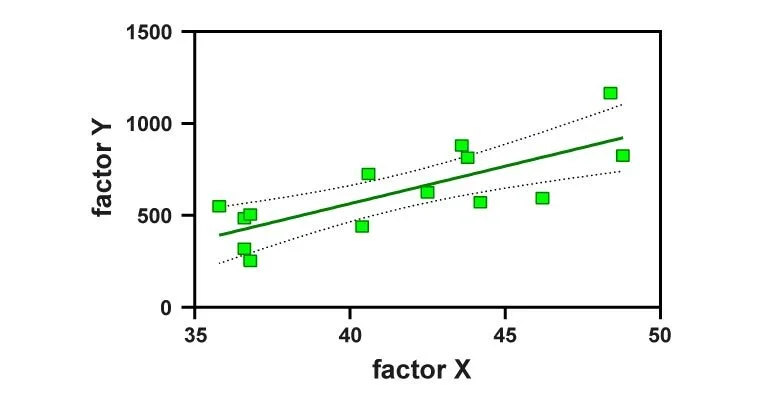What is Primary Deficit? – Example, Formula & Measures

What is a Primary Deficit?
Primary Deficit is the difference between the current year’s fiscal deficit (total income – total expenditure of the government) and the interest paid on the borrowings of the previous year. Once calculated, the primary deficit reflects the amount the Government needs to borrow to meet its current year’s expenses. In other words, the primary deficit is the amount that reflects the total expenditure of the Government against its total income.
Primary Deficit Formula
- Primary deficit = Fiscal deficit – Interest payments
Or
- Primary deficit = Total revenue earned – Expenses incurred excluding interest payments
Primary Deficit Calculation Example
To understand the concept of primary deficit, let us consider the following example.
Say, in a financial year, the financial books of the Indian Government show the following data –
| Revenue earned | Rs.100 lakh crore |
| Expenses incurred (including interest payments) | Rs.130 lakh crore |
| Interest payments | Rs.20 lakh crore |
Given these figures, the fiscal deficit of the Government will be calculated as follows –
- Fiscal deficit = Revenue earned – expenses incurred
= Rs.100 lakh crores – Rs.130 lakh crore
= Rs.30 lakh crore
However, to calculate the primary deficit, the interest payment will have to be excluded from the calculation.
- Primary deficit = Fiscal deficit – Interest payments
= Rs.30 lakh crore – Rs.20 lakh crore
= Rs.10 lakhs crore
What Does Primary Deficit Indicate?
A primary deficit is measured by the maximum amount of borrowing that the government can use, excluding interest payments.
A primary deficit can occur when a government spends more than it earns from taxes and other sources, excluding interest payments on debt. This can lead to an increase in overall debt and interest payments, which can negatively impact the economy’s stability.
Implications of Primary Deficit
The primary deficit shows how interest payments strain the Government’s revenue. By comparing the fiscal deficit and primary deficit, you can find out the interest payments that the Government is paying on its past borrowings.
This indirectly indicates the size of the borrowings and shows whether the Government depends on borrowings to meet its expenses. A major difference between the two deficit figures shows that the Government has borrowed a considerable amount of money which is eating into its revenue. On the other hand, a low difference shows limited borrowings.
If the primary deficit is zero, it means that the Government is borrowing only to meet the interest payable on previous loans. This means that the strain of the previous borrowings is high and is forcing the Government to borrow more.
Also Read
What are the Measures to Correct the Primary Deficit?
There are ways in which the Government can correct a primary deficit in its accounts. These ways are as follows –
1. Reducing the Expenses
If the Government reduces its expenditure, it can automatically reduce the fiscal deficit. As the fiscal deficit is reduced, it brings down the primary deficit too.
2. Increasing the Revenue
Alternatively, if the Government increases its revenue, the fiscal deficit falls. This also causes the primary deficit to fall as the Government gets sufficient funds to meet its expenses without having to borrow. As borrowings are reduced, the interest payment on the same is also reduced, and the primary deficit can be corrected.
Can the Primary Deficit be Negative?
A reduction in the primary deficit indicates progress towards fiscal health. In addition, the deficit is expressed as a percentage of GDP. It is required in order to gain a proper perspective and facilitate comparison.
It is worth noting that the difference between the primary and fiscal deficits reflects the amount of interest paid on public debt in the past.
Zero Primary Deficit
A primary deficit represents the shortfall between a government’s revenue and its expenditure, but does not take into account any interest payments that the government is required to make on its outstanding debt.
Therefore, zero primary deficit means that a government’s revenue and expenditure are in balance, and it is not required to borrow any additional funds to cover its operating expenses. This would be considered a fiscally responsible position for a government to be in as it means that it is not accumulating further debt.
However, it is important to note that even with a zero primary deficit, a government may still have an overall budget deficit if it is required to make significant interest payments on its existing debt. In this case, the government would still need to borrow funds to cover those payments and would be adding to its overall debt burden.
What is the Difference Between Primary Deficit, Revenue Deficit and Fiscal Deficit?
Refer to the table below to understand the difference between primary deficit, fiscal deficit and revenue deficit.
| Points of difference | Primary deficit | Revenue deficit | Fiscal deficit |
| Meaning | The difference between the fiscal deficit and the interest payments. | The deficit between the revenue expenditure and revenue receipts | The difference between the total revenue and total expenditure, including interest payments |
| Formula | Fiscal deficit – interest paymentsOr Total revenue – total expenditure – interest payments | Revenue receipts – revenue expenditure | Total revenue – total expenditure |
| Implication | Shows the deficit incurred without factoring in interest on past loans | Shows the borrowing needed to meet day-to-day expenses | Shows the borrowings needed to meet the aggregate expenses |
Final Word
The primary deficit is an important figure in measuring a country’s financial stability. It indicates the pressure of previous debts that might force the Government to borrow additional funds to service them. If the deficit reduces, it indicates that the government’s financial health is also improving. Every year, in the Union Budget, the fiscal deficit and primary deficit figures are present so that the public knows the Government’s financial health. Usually, the statistics are represented as a percentage of the GDP (Gross Domestic Product).
Want to take out a loan but the process is too long, worry not, we got your back, download the navi app and get cash loan instantly upto Rs.20 lakhs.
Download and Apply Now.
FAQs
The primary deficit indicates the borrowings that the Government needs to make to meet its expenses if the interest payments are not considered. It can also indicate the borrowing that the Government can use for its expenses without including interest payments.
Yes, the primary deficit can become zero. This would mean that the government’s fiscal deficit is equal to the interest paid on its borrowings. This indicates that the Government has to borrow additional funds simply to service the interest payments on past borrowings.
Besides the primary deficit, the Government can incur a revenue deficit and a fiscal deficit. Both these deficits indicate an excess of expenditure over revenues. The only distinguishing factor is the type of revenue and expenditure considered in calculating the deficits.
The Government primarily has two types of budgets – a revenue budget and a capital budget.
To tackle fiscal deficits, the Government can resort to borrowing or ask the Central Bank, i.e., the Reserve Bank of India (RBI), to print more money to meet its expenditure. Remember, both these measures, in extremes, are bad for the overall economy of the country.

Customer’s Feedback
No comments found.What is Financial Ratio Analysis? – Objectives, Types and Uses
Ratio analysis is a process that allows people to assess the financial health of a company. Using t... Read More »Treasury Management – Its Functions, Types and Benefits
Even the most well-funded business can run into huge losses if it does not have the resources to fu... Read More »How Anti Money Laundering Combats Financial Crime?
Anti Money Laundering (AML) is a system of rules, laws, regulations, and procedures that financial ... Read More »What is Salvage Value and Why is it Useful?
Salvage value, also called scrap value, is the value of a specific asset after its useful life. In ... Read More »Key Difference Between Factoring and Forfaiting in Trade Finance
Factoring and forfaiting have grown in prominence as major sources of export financing. For the uni... Read More »What is Factoring and its Importance in Financial Management?
Factoring is a practice in which a company buys the accounts receivable of another company at a dis... Read More »What is Budget Surplus: Its Effects, Advantages and Impact with Examples
When the revenue of a government, business, or individual exceeds its expenses in a given period, i... Read More »What is Balanced Budget – Components, Importance and Examples
In financial planning or the budgeting process, a balanced budget is one in which total anticipated... Read More »What Does Inflationary Gap Mean in Macroeconomics?
In macroeconomics, the difference between current and potential GDP is known as a gap. This gap is ... Read More »What is Accounting Conservatism in Finance and How Does it Work?
Accounting conservatism involves a conservative set of accounting guidelines wherein the worst-case... Read More »Multiple Linear Regression (MLP) – Uses, Formula and Examples
Various statistical models help in establishing a relationship between different variables. Multipl... Read More »What is Debt Funding and Why Should You Choose it?
A business can raise funds by borrowing through debt funding. Although debt can take many different... Read More »Top 10 Chit Fund Schemes in India in 2023
Chit funds are one of the most popular return-generating saving schemes in India. It is a financial... Read More »10 Best Gold ETFs in India to Invest in April 2023
Gold ETFs or Gold Exchange Traded Funds are passively managed funds that track the price of physica... Read More »10 Best Demat Accounts in India for Beginners in 2023
Creation of Demat accounts revolutionised the way trades were conducted at the stock exchanges. It... Read More »20 Best Index Funds to Invest in India in April 2023
What is an Index Fund? An index fund is a type of mutual fund or exchange-traded fund (ETF) that... Read More »Best Arbitrage Mutual Funds to Invest in India in April 2023
Arbitrage funds are hybrid mutual fund schemes that aim to make low-risk profits by buying and sell... Read More »10 Best SIP Plans in India to Invest in April 2023
What is SIP? SIP or Systematic Investment Plan is a method of investing a fixed amount in ... Read More »10 Best Corporate Bond Funds in India to Invest in April 2023
Corporate bond funds are debt funds that invest at least 80% of the investment corpus in companies ... Read More »10 Best Bank for Savings Account in India [Highest Interest Rate 2023]
Savings account is a type of financial instrument offered by several banks. It lets you safely depo... Read More »






















